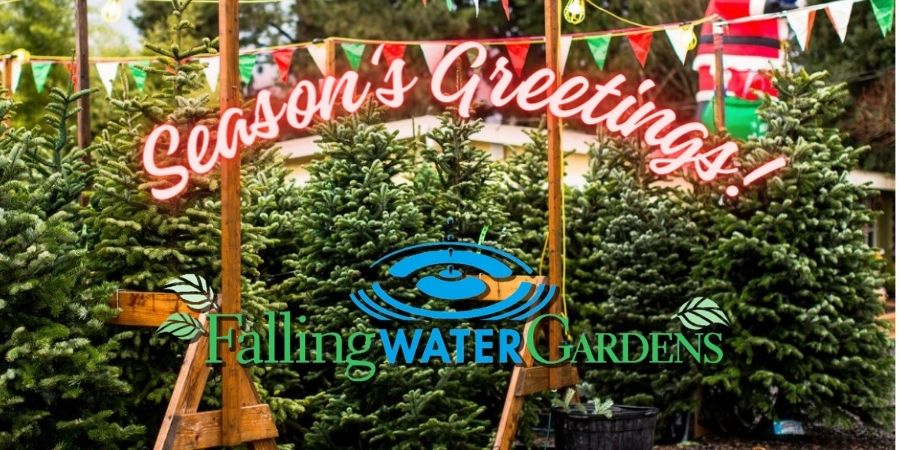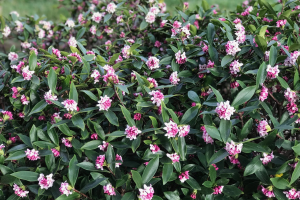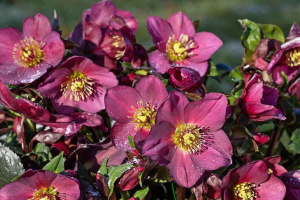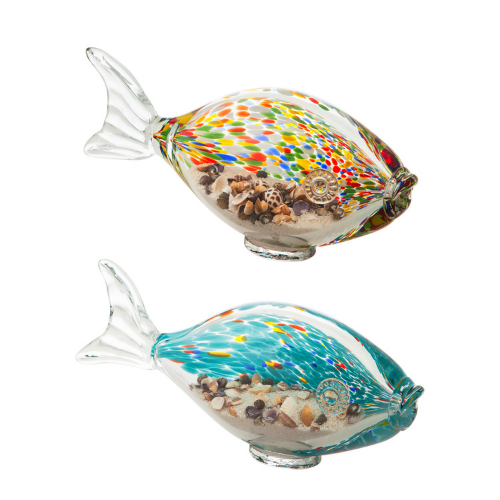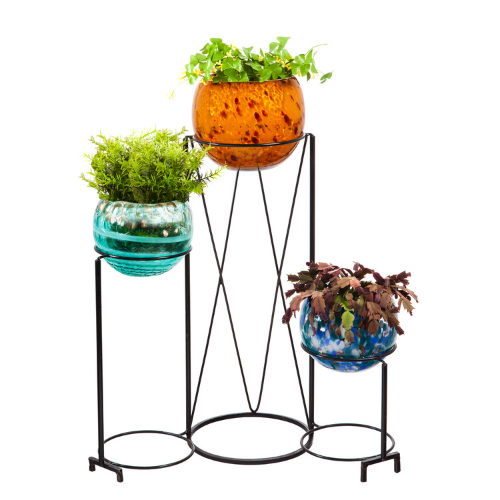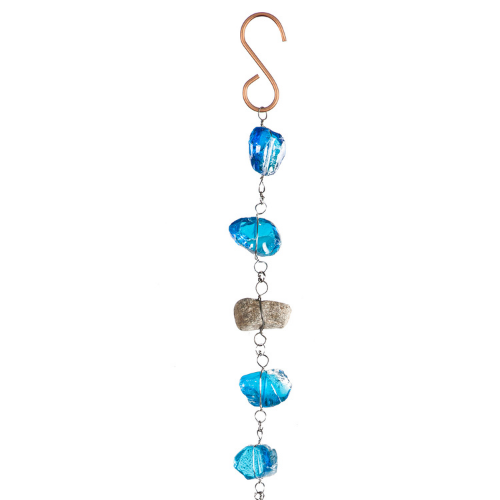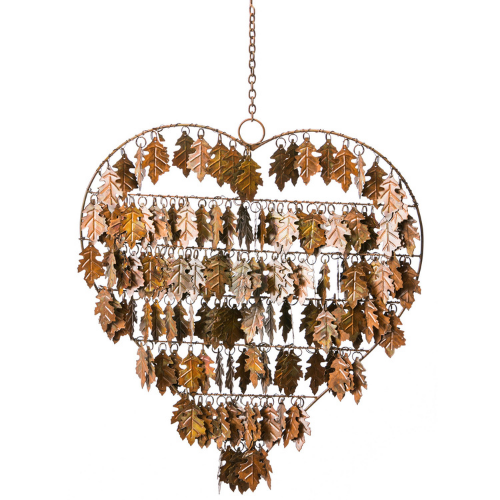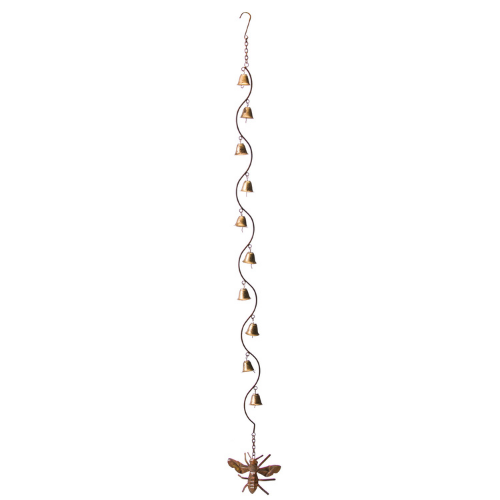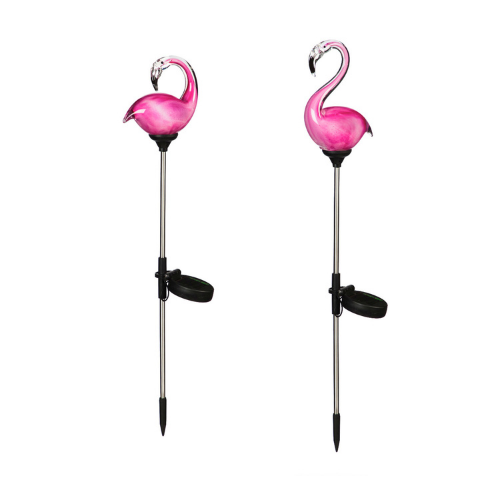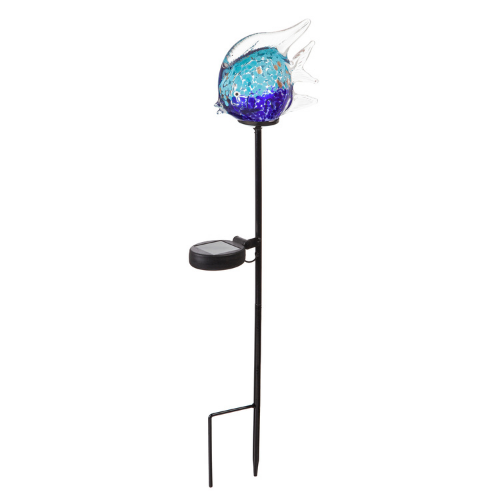It’s still technically winter but that doesn’t mean you can’t start planning for spring! Everywhere you look you can see little signs of spring from the days slowly getting longer to some of the flowers starting to bloom.
Nursery News
We are getting a bunch of shipments with new décor items and we can’t wait to share them with you!
Beneficial insects will start arriving soon, learn more about how these little critters can help your garden in the next tab of this newsletter.
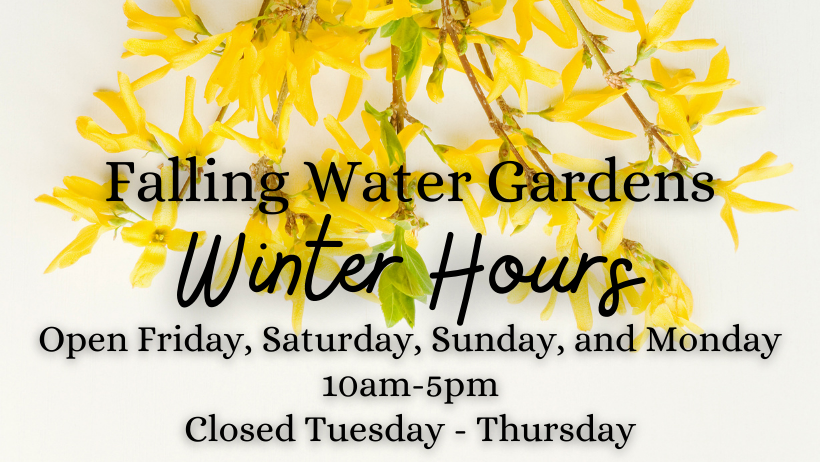
BENEFICIAL INSECTS
Looking for an Eco-friendly way to get rid of bad bugs or a way to help pollinate your veggie gardens and fruit trees? Check out these critters…
MASON BEES
Mason bees are a type of native bee that’s quite common throughout most of the U.S. They are usually a little smaller than a honeybee, and typically metallic blue or blue-black in color. They get their name from their habit of nest-building, which is to seal off the cells where they lay their eggs, with a mortar-like application of mud.
There are about 140 species of mason bees in North America. All are solitary bees. The males do not have a stinger, and the females will only sting if trapped or squeezed. This makes them an ideal neighbor for the home garden, since they pose little to no threat of stinging.
Nesting & Egg-laying
In the wild, mason bees lay their eggs in small natural cavities such as woodpecker holes, insect holes and hollow stems, but they seem to be just as happy to lay their eggs in artificial nesting cavities such as wooden blocks with holes drilled in them, cardboard tubes and paper straws. Because mason bees are unable to excavate their own nesting cavities, they seem to be quite happy to use whatever location is suitable.
Female Mason Bee
 Female mason bees emerge in early spring and immediately begin to forage for pollen and nectar, which they collect from fruit trees, berries, flowers and vegetables. They pack this food into the far end of their nesting cavity until they decide there’s enough there to feed a young bee. Then she lays an egg and seals up the cell. This process continues until the bee has filled the entire chamber with a series of pollen/nectar/egg cells. Interestingly, the eggs that are destined to be female are always deposited at the back of the nesting chamber; the male bees will emerge first.
Female mason bees emerge in early spring and immediately begin to forage for pollen and nectar, which they collect from fruit trees, berries, flowers and vegetables. They pack this food into the far end of their nesting cavity until they decide there’s enough there to feed a young bee. Then she lays an egg and seals up the cell. This process continues until the bee has filled the entire chamber with a series of pollen/nectar/egg cells. Interestingly, the eggs that are destined to be female are always deposited at the back of the nesting chamber; the male bees will emerge first.
Once the mason bee has completely filled one chamber, she will begin filling another one. This pollen-collecting and egg-laying will continue for four to six weeks, after which the bee will die.
Mason bee larvae hatch just a few days after the eggs are laid. They munch away on the food that’s been stored in their cell, which usually lasts them about 10 days. Then the larva spins a cocoon and pupates. By autumn, the insects look like an adult bee, but they remain inside their cocoons throughout the winter. When the weather warms in the spring, the males break through first; the females emerge several days later.
Effective Pollinators
Mason bees are very effective pollinators. Just two or three females can pollinate a mature apple tree! Mason bees will also work in cool or rainy weather when honeybees are more likely to take the day off.
Mason bees actually prefer to make their nests close together. An artificial nesting chamber takes advantage of this trait. Bees appreciate the convenience! In the wild, their eggs are laid in natural cavities which are rarely re-used. To avoid pest and disease problems, artificial nesting boxes should be carefully cleaned or disposed of after one or two seasons of use.
Source: Gardener's Supply Company
Here is a video on how to release your mason bees:
PRAYING MANTIS
USE
Praying Mantis eat a wide variety of garden pests. In their younger stages they eat aphids, thrips, flies and maggots, small caterpillars, leafhoppers, white grubs and other soft-bodied insects. Mature Mantis feed on larger caterpillars, earwigs, chinch bugs, sow bugs, beetles, grasshoppers and other large insects.
RELEASE
You can keep the egg cases in the cup, set them on a window ledge or in the patio until they hatch. As soon as you see tiny praying mantids emerge remove the lid and sprinkle the mantids around your garden. Or put the egg case in a bush, hedge, limb or anything more than two feet above ground. The egg case may be inserted in the fork of a branch or hung with a piece of string or needle and thread run through the outside of the case. Hanging will help keep birds and rodents from eating the eggs in the case. If there are ants are in the area, oiling the string will help keep them away.
LIFE CYCLE
Praying Mantis (Tenodera sinensis) hatch out of their egg case (ootheca) along the seam that looks like louvered windows with some mud packed on top. They hatch in the spring when the weather warms, the warmer the temperature, the sooner they hatch.
Unlike most insects the mantis do not hatch as larvae, they emerge as miniature adults, about half an inch long.
They will grow through spring and summer until they reach a length of 5 to 6 inches, shedding their skins several times. Although mantis have wings, they do not use them until fall when the female wings develop and she begins flying around looking for males to mate with.
After mating, she eats the head off the male, which helps to nourish her eggs. She then attaches the brown foam to a branch, lays her eggs inside, and dies shortly afterward, The eggs are protected from the winter cold in the foam and the cycle begins again in the spring.
GENERAL INFORMATION
When the eggs hatch the egg case does not change in appearance except for what looks like a little sawdust hanging from the seam. Since the Mantis do not move much and blend easily with their surroundings, it is easy to miss the hatching.
While most insects are constantly searching for food, Mantis are content to stay in one area and wait for their food to walk by and grab it with their strong forelegs. This is why they are good to use early in the season, before there are pest problems, and use other insects after pests arrive.
LADYBUGS
USE
Ladybugs prefer to eat aphids and will devour up to 50 a day, but they will also attack scale, mealy bugs, leafhopper, caterpillar eggs, and other soft bodied pests. They dine only on insects and do not harm vegetation in any way.
RELEASE
Ladybugs should always be released after sundown since they only fly in the daytime. During the night, they will search the area for food and stay as long as there is food for them to eat. The more they eat the more eggs they lay and the more insect eating larvae you will have. It is best if the area has been recently watered. Ladybugs tend to crawl up and toward light. So release them in small groups at the base of plants and shrubs that have aphids or other insects, and in the lower part of trees.
LIFE CYCLE
Ladybugs mate in the spring and lay yellow eggs in clusters of 10 to 50 on the underside of leaves. About five days later the larvae emerge and will eat about 400 aphids during their 2.5 week cycle. The larvae look like tiny black caterpillars with orange spots but do not eat vegetation.
The larvae then pupate and emerge from their cocoon as adults after about a week. They begin feeding on aphids, other insects, and pollen to build up their body fat. In the summer and fall the Ladybugs migrate into the mountains and during the winter they lie dormant under the snow. In the early spring they fly back down to the lowlands to resume searching for food in earnest. They begin mating, lay eggs, and die.
*Beneficial insects are available for purchase in the spring. Call the nursery to see if we have beneficial insects in stock: 360-863-1400.
Design Inspiration
Is anyone else feeling inspired and eager for spring? We sure are. We’ve decided to structure February’s Newsletter a little differently, hoping it will inspire you to pursue gardening and pond-related hobbies and enjoyment.
Fire Pits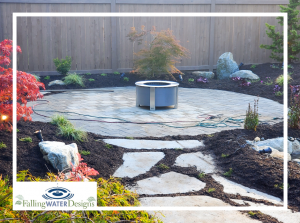
Benefits of having an outdoor fire pit:
- Cook on it!
- Host more social gatherings in the future.
- A fire pit can increase the value of your home.
- Lengthen your days with more light and a warm, cozy fire.
- Have your fire pit built in such a way that it can be used year-round.
- Extend your home with one more area for you and the family to relax and enjoy.
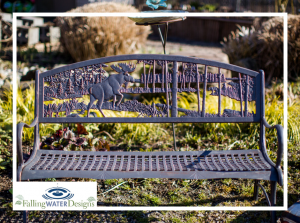
Patio Furniture & Decor
Get the most out of your landscape with areas specifically designed for you to kick back and relax. If you’re a visual, hands-on person, visit Falling Water Gardens and be inspired by the patio furniture and garden decor on display.
Garden Lighting Options
Benefits of garden lighting:
Safety – let the light guide you and your guests at night
Security of your home
Maintaining your landscape indicates that your home is well cared for, which can discourage trespassing and theft.
If you’re concerned about the utility bill costs, set timers or install motion detectors for your outdoor lights.
Increase the enjoyment of the investment in your garden
Install lights throughout your flower beds to enjoy the beautiful colors and plant life after the sun goes down.
Place lights next to fountains or ponds.
Install spotlights on your favorite trees.
Enhance the property value and curb appeal
Highlight features of your home that you are most proud of.
Ponds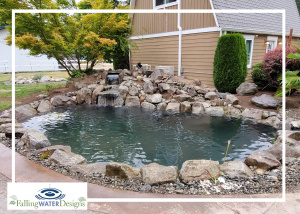
Benefits of having a pond:
Enjoy the peaceful sound of moving water
- Drown out the sound of nearby traffic or noisy neighbors.
Grow aquatic plants
- Maintain a healthy ecosystem.
- Limit algae growth.
- There are so many beautiful varieties of aquatic plants to compliment your pond.
- Floating plants, deep-water emergent plants, marginal or bog plants, and submerged plants.
Add koi or goldfish to your pond
- Many people believe that koi fish bring good luck and strength.
- Koi pond owners have reported stress relief, relaxation, and higher property values as some of the incredible benefits of koi ponds.
- Fish are low maintenance pets.
Water Features 
Is your neighborhood becoming congested? Do you feel like you’re not able to “escape” when you’re home after a long day at work? Find serenity and reduce the noise pollution in your backyard by adding a water feature.
Contact us to get started are on your garden projects!
Featured Koi of the Month: Kigoi
Koi of the Month: Kigoi
Kigoi are all yellow Koi that are non-metallic and free of imperfections. The bright yellow color should be consistent from nose to tail. If the Kigoi has sparkling diamond scales, it is called a Gin Rin Kigoi. If it has red or pink eyes it is called Akame Kigoi, which is rare.
Pond and Fish Care in Freezing Weather
 Freezing weather is in the forecast. Here’s how to keep your fish and pond equipment safe.
Freezing weather is in the forecast. Here’s how to keep your fish and pond equipment safe.
FISH
- Decorative pond fish like Koi and Goldfish are extremely hardy. The cold weather doesn’t usually affect them. Your fish will float just inches from the bottom waiting for warmer spring temperatures. The water at the bottom of the pond is warmer than at the top.
- When practical suck water from the surface rather than the bottom of the pond. If your pump is sitting at the bottom of your pond, try to lift it closer to the surface if you can. Skimmer owners are already sucking from the surface and don’t have to do anything else. If you have a more elaborate plumbing system, switch to surface suction instead of bottom suction if possible.
- Ensure that at least one small hole remains open at the top of the pond if it starts to ice up. Keeping an opening in the pond surface allows oxygen into the water and toxic gasses from decomposing plant material and fish waste, to leave the pond. Some great ways to keep an opening are to keep the water feature running; when the water returns to the pond it will usually keep an opening in the ice. Float a rubber play ball on the surface of the pond; the ball floating on the surface will often keep a hole open. Install an aerator in the bottom of the pond; the bubbles will keep an opening on the surface. Install a pond deicer; the deicer heats a small hole in the pond.
- If the pond completely ices over do not break the ice. This is can cause concussive damage to the fish’s internal organs. Also smashing ice can cut your liner. The best way to open a hole in a frozen pond is to take a boiling pot of water carefully out to the pond and put the entire pan of boiling water on the ice. Do not pour the boiling water on the ice, just set the hot pan of water on the ice. Repeat this as the water cools in the pan until you’ve opened a hole in the ice.
PLANTS
Most aquatic plants are dormant by now. If the pots are sitting high in the pond you can temporarily drop them lower in the pond to protect them from the freezing weather. Just remember to lift them back up after the freeze danger has passed.
POND EQUIPMENT
- It’s always a bit of a gamble how to manage your equipment during a freeze. In almost all instances Falling Water Designs suggests to try and keep your pond running during a freeze. In many ponds it is nearly impossible or impractical to try and get all the water out of the equipment and the plumbing. If you cannot completely drain the equipment and the lines it is safer to keep the pond running because running water is less likely to freeze even in below freezing conditions. If we can keep the water running the pipes and equipment are far less likely to freeze and break.
- Sometimes in a prolonged freeze the waterfall/stream will ice up to the point that water is overflowing the stream instead of returning to the pond. Another problem that can happen is ice crystals will form on the pond surface to the point that the skimmer will clog and the pump won’t work. If this happens you will be forced to turn off the pump and your equipment and then take additional precautions to try and keep equipment from being damaged. The good news is that if you are forced to turn off the pump cold water holds much more oxygen than warm water so your fish don’t really need the pump running in cold weather.
- Pumps: If your pump is submersible you don’t really have to worry. Your water feature would have to be very shallow for freezing water to damage a submersible pump. If you pump is inline it is very important to keep it running during the freeze or you will have to completely drain it. On most inline pumps there are two drain plugs at the bottom that will have to be opened to get all the water out of the pump.
- Plumbing and Check Valve: Most water features have a check valve between the pump and the top of the waterfall/stream. The check valve keeps water in the line on the way up to the top of the waterfall. It is not possible for most people to remove their check valve to drain the line so in many water features there is water in the plumbing from the pump to the top of the waterfall. If you turn off your pond that water will stay in the line and can freeze. This is the over-riding reason we suggest that most water features be kept running.
- UV Sterilizer: UV sterilizers are expensive and prone to breakage in freezing weather. If you system will allow you to bypass the UV you should do so, remove the UV, drain it completely and store it in the garage. Unfortunately very few ponds are plumbed for this. Your second option is to remove the transformer and then unscrew the quartz sleeve and light bulbs. We sell caps that allow everything but the housing to be removed and stored. This way you can keep the water running and in a worse case situation only the housing is damaged. Your third option is to just keep the water running through the equipment and usually the water won’t freeze and damage anything. Temporarily plugging the sterilizer back in will generate some heat and possibly keep it from freezing.
- Pressurized bead and/or sand filters: Bead and sand filters are expensive and prone to breakage in freezing weather. While some limited amount of biological activity occurs, most bacteria die at temperatures below 45 degrees. Falling Water Designs suggests that it is more important to preserve costly equipment than keep the limited amount of bacteria alive so the filter should be drained for the winter. We have a video on our website that explains how to drain your filter. If you are going to keep the pond running the filter should be set to “bypass” or “recirculate” and then the bottom drain should be opened to allow the water to drain from the bottom of the filter. Do not allow standing water in the bottom of the filter when the valve is set to bypass, recirculate or “winter”. Do not try and keep the filter running in the normal filter mode during freezing weather. The water in the filter can freeze and break the interior plumbing or the exterior housing. In bypass or recirculate mode the water is just going through the valve head at the top and not the media at the bottom which is why you can drain the bottom. If you are not going to run your pump during the freeze then you should drain the bottom and put the filter valve on “winter”. The winter setting will not allow water to run through the system so it is only used if you will be shutting down your entire pond and pump.
 Problems with running the pond: In almost all instances Falling Water Designs suggests to try and keep your pond running during a freeze.
Problems with running the pond: In almost all instances Falling Water Designs suggests to try and keep your pond running during a freeze.
This is the easiest and in most instances the most practical solution. However, if you go this route and the waterfall/stream becomes iced to the point that water is leaving the pond, or if your skimmer becomes clogged with ice crystals to where you have to turn off the pump, or if the power goes out and the temperature is below freezing, you will have to take additional precautionary steps. If the pump is not running you will need to go out and disconnect the UV sterilizer and drain it completely of water and store it in the garage. You will also have to put the pressurized filter on “winter” and ensure that you did drain the beads. Finally when practical you should drain any exposed pipes of water to minimize breakage. Ensure that you keep one small hole open on the surface of the pond.
Featured Plants
Here are this month’s featured plants. We think this selection would look great in your garden right now. Click on the name of the plants below to learn more about each plant.
Terrestrial Plants
Camellia sasanqua ‘Fairy Blush’
Deep pink buds open to reveal dainty, single, apple blossom colored blooms. The blossoms’ delicate fragrance as well as the smaller growth habit make this well suited to a small courtyard or patio. Mid to late season bloomer. Evergreen.
Daphne Odora ‘Zuiko Nishiki’
Japanese selection with dark green, glossy leaves and extremely fragrant pink and white flower clusters in late winter. Seems more vigorous growing and hardier than ‘Marginata’. Deer Resistant.
Helleborus ‘Ice ‘N Roses Red’
Outward-facing deep-red flowers reign supreme! Stunning when backlit with the sunshine. These sparkling ruby-red gems are a treasure in the late winter/early spring garden. The deer resistant evergreen foliage is dark glossy green.
Sarcococca hookeriana humilis
Great groundcover for the shade garden! The polished appearance of the dark green leaves create a clean-looking uniform appearance. Fragrant white flowers are followed by blue-black fruit. Tolerant of dry shade and urban conditions, thriving with little care.
Plant Database

Have you checked out our plant database? It contains information about the plants that we sell at the nursery and more!
We have even taken it one step further and have incorporated QR codes into the database to help you save and recall information on the plants you are interested in at home or have bought from our nursery. You can bring us the saved plants from this data base to help us locate the ones you want. As well as when you come to Falling Water Gardens you will be able to scan the plant signs to get further information about the plants and flowers.

What is a QR code? In the simplest terms a QR code is a bar code. Most smart phones come equipped with a bar code/QR code reader that will scan the QR code and bring you to the web page of information about our plants. From there you can bookmark the page. If yours does not contain a QR code reader already, you can download one for free through your phone’s app store.


